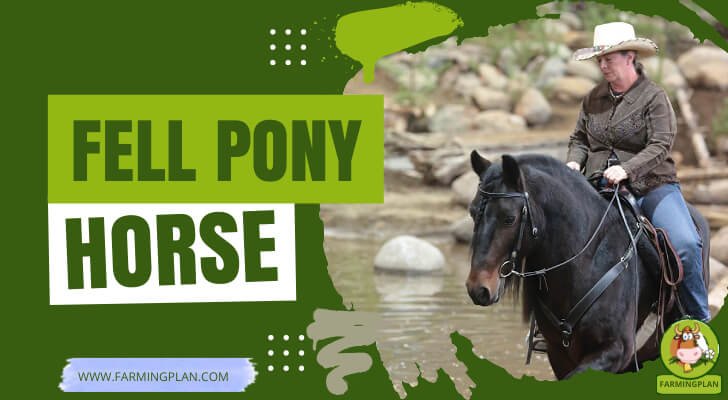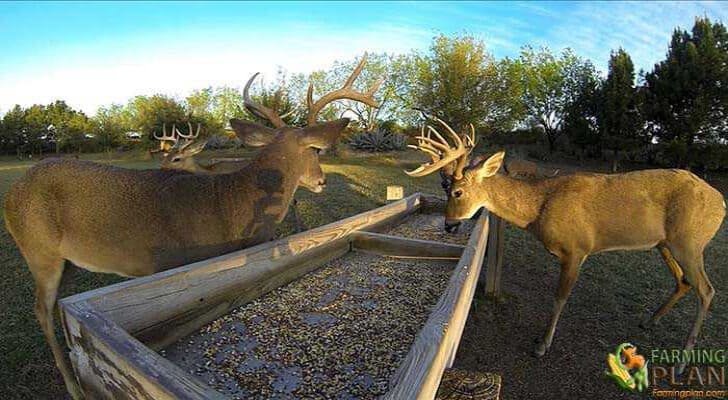I knew I had found a truly special companion when I met my fellow pony Horse. With its strong yet gentle nature, this breed has been a delight to care for and ride. I’ve experienced firsthand how their calm temperament makes them ideal for children and adults. Whether out for a peaceful ride in the hills or just spending time together, my Fell Pony always amazes me with its loyalty and intelligence. If you’re looking for a versatile, loving horse, a Fell Pony could be your perfect match!

History and Origin of the Fell Pony Horse
The history of the Fell Pony Horse is deeply rooted in the hills and valleys of northern England, particularly in Cumbria and the Lake District. These ponies were initially bred to thrive in harsh, mountainous environments. Farmers and shepherds used them for a variety of tasks, including herding sheep and carrying heavy loads. Their firm, compact bodies were ideal for working in these challenging landscapes. The Fell Pony Horse history dates back over a thousand years. Some believe their ancestors were Celtic or Norse ponies brought to Britain by invaders.
Over time, they developed into a hardy breed that could survive in the cold, wet conditions of the British hills. Their thick coats, powerful legs, and gentle disposition made them highly valued for work, but they also became beloved for their loyalty and temperament. Today, the Fell Pony Horsesymbolizes northern England’s hardworking and rugged spirit. They are still used for riding, driving, and showing, but they are also cherished for companionship and versatility.
Physical Characteristics of the Fell Pony Horse
Fell Ponies are known for their strong and compact build. These ponies typically stand between 12 and 14 hands high, which makes them a medium-sized breed. Despite their diminutive stature, they are incredibly sturdy and capable of carrying heavy loads across rugged terrain.
- Coat: Fell Ponies have a thick double coat that protects them from cold weather. Their coats can come in various colours, but the most common are black, bay, and brown. Some Fell Ponies may have white markings on their faces or legs, but solid colours are more typical.
- Head and Ears: Fell Ponies have a well-proportioned head with a broad forehead and large, expressive eyes. Their ears are small and alert, adding to their overall charming appearance.
- Body and Legs: Their bodies are muscular and solid, built for endurance and strength. Their legs are strong, with dense bone structure, which is one of the key reasons they can work in rough conditions.
- Mane and Tail: Fell Ponies have long, flowing manes and tails, which can become quite thick. Their coats, manes, and tails require regular grooming to keep them looking their best, especially during shedding seasons.
Temperament and Personality of Fell Ponies
Fell Ponies are known for their calm, friendly nature, making them excellent companions for people of all ages. Despite their history as working animals, they are not aggressive and are often described as gentle. Their intelligence and eagerness to please make them easy to train, though they can also be independent sometimes.One of the most remarkable aspects of their personality is their strong bond with their owners.
Fell Ponies are loyal and affectionate, often seeking attention and enjoying human company. This makes them ideal for families and people looking for a horse with which they can form a deep connection. They are also known for their confidence and resilience, qualities that make them well-suited for novice and experienced riders whether you’re looking for a pony to ride or simply a companion for outdoor activities, a Fell Pony Horse can adapt to many situations.
Read More: Dartmoor Pony Horse: Avoid These Common Mistakes and Embrace Their Strength
Training and Handling Tips for Fell Ponies
Training a fellow pony requires patience, consistency, and understanding of the breed’s unique traits. Here are some tips to help you effectively train and handle your Fell Pony Horse:
- Start Slowly: Fell Ponies are intelligent but may be wary of new experiences. Begin with short, positive training sessions to build trust and avoid overwhelming them.
- Use Positive Reinforcement: Fell Ponies respond well to positive reinforcement, like many ponies. Praise and reward them for good behaviour to encourage learning.
- Be Consistent: Establish clear rules and be consistent in your training methods. Fell Ponies thrive when they know what to expect and what is expected of them.
- Socialization is Key: These ponies are naturally social, so allow them to interact with other horses and people. This will help them feel comfortable in different environments and situations.
- Stay Calm and Patient: Fell Ponies are known for their calm demeanour but can also pick up on their handler’s emotions. Stay calm and patient, and your pony will reflect that behaviour.
Fell Pony Horse Breeding and Genetics
Fell Pony Horse breeding focuses on preserving the unique qualities that make the breed special. Good breeding practices are essential to maintain the breed’s strength, temperament, and overall health. Here are some factors to consider when breeding Fell Ponies:
- Choosing the Right Stallion and Mare: It’s essential to select breeding pairs with desirable traits, such as strong legs, calm temperament, and good overall health.
- Genetic Health Testing: Genetic testing can help identify potential health concerns that may be passed down through generations, ensuring that the breed remains strong and healthy.
- Preserving the Breed’s Integrity: Many breeders focus on maintaining the traditional traits of the Fell Pony Horse, avoiding crossbreeding with other breeds to preserve their unique characteristics.
- Breeding Age: Female Fell Ponies, or mares, should be at least three years old before breeding, and male ponies, or stallions, should be mature enough to sire healthy foals.
Read More: Welsh Pony Horse: The Unbeatable Combination of Strength and Gentle Temperament
Caring for Your Fell Pony Horse
Proper care is essential to keep your Fell Pony Horse healthy and happy. Here are some key care tips:
- Feeding: Fell Ponies are hardy and can thrive on a simple diet of hay and grass. Make sure they have access to clean, fresh water at all times. You can also provide a small amount of concentrated feed during heavy work or extreme weather.
- Grooming: Due to their thick coats, Fell Ponies require regular grooming, especially during shedding seasons. Brush their coat to remove dirt and loose hair, and ensure their mane and tail stay tangle-free.
- Exercise: Fell Ponies need regular exercise to stay fit and healthy. Regular turnout in a pasture or daily walks and rides will help keep your pony active and strong.
- Hoof Care: Regular hoof trimming and checks are crucial to prevent foot problems. Fell Ponies are usually good at keeping their hooves in good shape, but having them inspected by a farrier is still essential.
- Shelter: Make sure your Fell Pony Horse has a clean, dry shelter to protect it from extreme weather conditions, especially during winter.
Common Health Issues in Fell Ponies
While Fell Ponies are generally a healthy breed, there are a few health concerns to be aware of:
- Laminitis: This condition causes inflammation in the hooves and can be triggered by obesity or poor diet. Regular check-ups and a balanced diet can help prevent laminitis.
- Equine Cushings Disease (ECD): This disease is common in older ponies and can cause symptoms like excessive thirst and coat changes. Regular veterinary care is essential to manage the disease.
- Colic: Colic is a common digestive issue in horses and ponies. Changes in diet, stress, or exercise can cause it. Keep your Fell Pony Horse on a regular feeding schedule and monitor for signs of discomfort.
- Respiratory Issues: Due to their thick coats, fellow horses may be more susceptible to respiratory issues during winter. To prevent respiratory problems, ensure proper ventilation in their shelter.
Read More: Fjord Horse: The Untold Truth Behind This Mighty Yet Gentle Breed
Fell Pony Horse as a Versatile Companion
Fell Ponies are incredibly versatile, making them suitable for a variety of activities:
- Riding: They are great for hacking and trail riding. Their calm nature and strength make them reliable on long rides or through rugged terrain.
- Driving: Fell Ponies are also skilled at driving, especially in traditional harness events. Their sturdy build and willing attitude make them excellent carriage ponies.
- Showing: Fell Ponies are often demonstrated in competitions, especially in the UK. Their beauty and impressive performance in the ring make them a favourite at equestrian events.
- Family Companions: With their gentle temperament, Fell Ponies make excellent companions for children and adults alike. They are safe, calm, and willing to bond with their family.
FAQ
What are Fell Ponies used for?
Fell Ponies are used for riding, driving, showing, and working in various outdoor activities.
How big do Fell Pony horse grow?
Fell Ponies typically grow between 12 and 14 hands high.
What colours do Fell Ponies come in?
Fell Ponies are most commonly black, bay, or brown, with some having white markings.
Are Fell Ponies easy to care for?
Yes, they are hardy ponies that require basic care such as grooming, feeding, and regular exercise.
Do Fell Ponies make good family pets?
Yes, their gentle temperament makes them great companions for families and children.
Conclusion
Fell Ponies are a versatile and resilient breed known for their gentle temperament, muscular build, and historical significance in northern England. They also make excellent family companions, ideal for various activities such as riding, driving, and showing. These ponies can thrive for many years with proper care, including regular grooming, feeding, and exercise. Their loyalty and adaptability ensure they remain a cherished breed for horse lovers worldwide. Whether you are looking for a work partner or a family friend, a Fell Pony Horse can offer an enriching and fulfilling experience.


